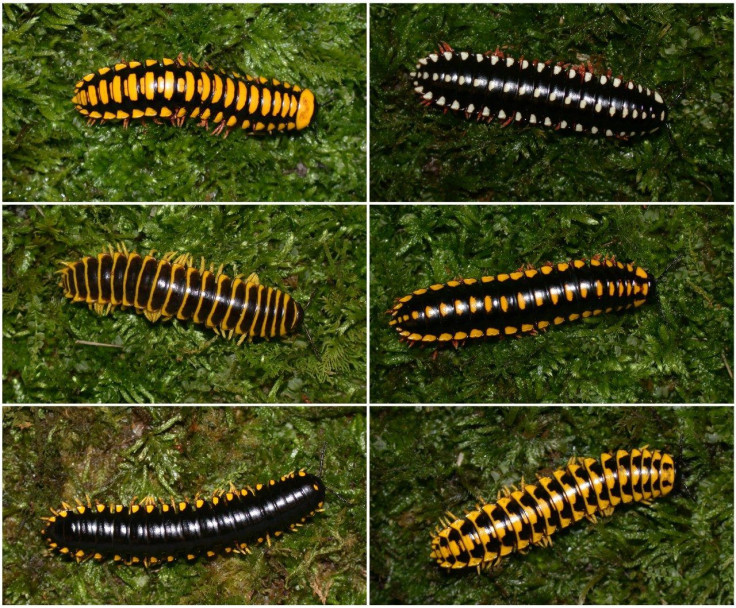Cyanide-Covered Millipede From Cumberland Mountains Comes In 6 Color Combinations

A new species of millipede has been discovered on the forest floor of Cumberland Mountains, and it is noteworthy for two completely different reasons. One is its color combination and the other is its toxicity.
Apheloria polychroma is a thumb-sized millipede which was discovered and named by Paul Marek, an assistant professor at Virginia Tech. Marek named the millipede after the color variations it displays — six different combinations that could easily lead the untrained eye to think of them as different species. There are other known millipede species that also naturally occur in more than one color combination, but none of them has as many as six.
The toxicity of A. polychroma (not an uncommon trait among millipedes) is in the form of cyanide, which covers its body. That would make it a very unappetizing meal or snack for a predator (chiefly birds), who, if somehow survived the lethal dose of poison, would certainly think a few times before attempting to chow down on the colorful crawler again.
This combination of different colorations and a poisonous coating is advantageous for other millipede species that share the Southwestern Virginia forest floor with A. polychroma. Many of them mimic the coloring of their lethally toxic kin, so predators would leave them be instead of risking a meal that could be their last.
“The millipedes that copy Apheloria polychroma use what is called Mullerian mimicry, where different species converge on a shared aposematic (warning signal) to defend themselves against a common predator. The more frequently predators encounter what appears to be the same brightly colored unpalatable millipede and memorize its warning colors, the better the collective advertisement of their noxiousness,” a Virginia Tech statement explained.
Other than playing a sort of protector to other millipede species, A. polychroma also fulfills other tasks in its ecosystem. Like other millipedes, it breaks down the decaying vegetation and wood on the forest floor. This decomposition unlocks nutrients that enriches the ground and supports the forest’s future.
“It is imperative to describe and catalog these species so that we know what role they play in the ecosystem — and what impact we are having on them. This region is ripe with biodiversity and is an excellent living laboratory to do this work,” Marek said in the statement, talking about the need to know about the existence of species before they go extinct, a phenomenon called anonymous extinction.
Marek runs the only lab in the United States that focuses on millipedes. In the last few years, he has discovered and named nine other species. One of those was a millipede with 414 legs, called the leggiest creature on Earth.
A. polychroma was described in an open-access paper titled “Apheloria polychroma, a new species of millipede from the Cumberland Mountains (Polydesmida: Xystodesmidae)” that appeared online in the journal Zootaxa. Graduate students Jackson Means and Derek Hennan were coauthors on the report.
© Copyright IBTimes 2024. All rights reserved.





















